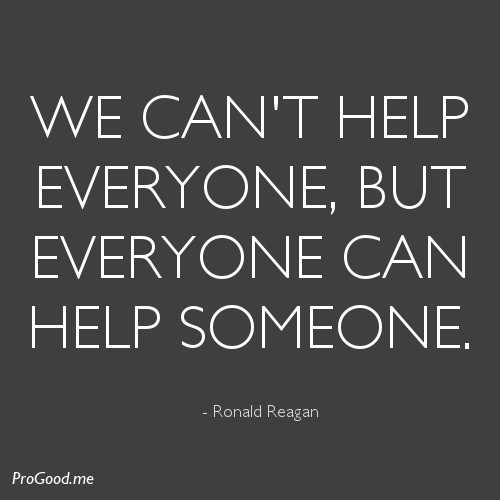This post is a bit of a mishmash pulled from a training I went to today!
Attended a great training today by, Franklin W. Bender, MS, CCC-SLP
Attended a great training today by, Franklin W. Bender, MS, CCC-SLP
Evaluating and Serving ELL Students for SPED Services
This is a harsh reality of our jobs: We are here to help students with DISABILITIES, not to help ALL children. Ouch. Right? But it's true. If we have 100+ students on our caseloads, we are helping no one. Everyone could benefit from extra help, that does not mean they should all get the help.
 |
| Image: pro-good.tumblr.com |
It is very common for ELL students to be incorrectly identified as speech and/or language impaired. We have to improve our assessments of ELL students (and
monolingual students as well), so our services continue to be effective
and efficient.
Why do we have problems with assessments of ELL students? Conditioned beliefs. Like what? Just an example, "We have to wait to at least 4 years to assess for language impairments." Why do we think that? Well we were taught in graduate school and through research that the acquisition of Cognitive Academic Language Proficiency (CALP) takes 5-7 years (Cummins). CALP never stops developing. In fact, I can prove it! Is your vocabulary better than when you graduated from high school? I can guarantee it is! So waiting for CALP to "finish" developing is not going to happen, and a truly language impaired student will be struggling from the very beginning (with skills like BICS). We have to get better at looking at BICS, and a pattern of strengths and weaknesses. We also have to get over our personal fears of "OMG this student speaks Tagalog!? I can't do this!" Yes, you can. Find an interpreter and get to work....
We have to look at the data. Even after a year or two we can see trends in student's data that the student is not acquiring the language as they should. Examples: We need to look at BICs, we should be looking at their data from school (what tests are they taking and how are they doing?). Are they being given a language proficiency test every year? How are they doing on it? (In California we have the CELDT. I can pull all the data for each child and compare it to an average for my school!) We have to look at the pattern of strengths and weaknesses. Another example: a child has Down Syndrome and is bilingual. Are you going to wait to conduct therapy because CALP takes 5-7 years to develop? Absolutely not! Pull all of the information together.
Another common misconception is that because parents are not well educated the student will struggle too. There are many students who surpass their parents education level (e.g. our presenter Franklin Bender MA CCC-SLP's parents were high school graduates and he is currently getting his Doctorate! Proof!) We have to question our thought process, look directly into how and why we are doing our assessments.
We have to look at the data. Even after a year or two we can see trends in student's data that the student is not acquiring the language as they should. Examples: We need to look at BICs, we should be looking at their data from school (what tests are they taking and how are they doing?). Are they being given a language proficiency test every year? How are they doing on it? (In California we have the CELDT. I can pull all the data for each child and compare it to an average for my school!) We have to look at the pattern of strengths and weaknesses. Another example: a child has Down Syndrome and is bilingual. Are you going to wait to conduct therapy because CALP takes 5-7 years to develop? Absolutely not! Pull all of the information together.
Another common misconception is that because parents are not well educated the student will struggle too. There are many students who surpass their parents education level (e.g. our presenter Franklin Bender MA CCC-SLP's parents were high school graduates and he is currently getting his Doctorate! Proof!) We have to question our thought process, look directly into how and why we are doing our assessments.
The golden ticket should not, "Finally he/ got an assessment!" An assessment is just another tool to find more data and determine if the student meets eligibility criteria. We should not be looked at as "gate keepers". We need to remember to be objective.
How do we start to fix the process? Stop going with your gut and, "Show me the data!"
 |
| image: http://www.newfangled.com |
We need a better process for a Pre-Referral.
This will keep us from getting inappropriate referrals. Sweet!
- Look at home language and culture.
- L1/L2 Acquisition Characteristics
- Academic History
- Attendance Stability
- Teacher Concerns
- RtI
- ESL testing data
- Parent reporting-medical history, development, language development and learning.
- What is typical language acquisition? What is not? Here is a developmental milestone chart.
- Stick to the criteria. Special Education as it is defined is not a remedial support program (yet, the laws can change!). The law says we need 3 criteria to be eligible for services:
- Qualify as having a handicapping condition using appropriate evaluation methods.
- Documentation of an educational impact,
- requiring specially designed instruction to address educational deficits.
So how do we figure out if it's normal second language acquisition or if it's disordered? That is tricky. Data collection should be fluid, meaning not just a standardized test (your district may tell you otherwise). A dynamic assessment is an example of a fluid assessment. Dynamic assessment is great, as long as you have research to support your methods! Remember that whole concept of the Zone of Proximal development? Also checklists and charts that are research based. You can also read articles or find books on second language acquisition that you can site in your reports.
Don't think you have the time for dynamic assessment? Administering the CELF and analyzing and writing can take up to 4 hours. Right? We already know the student is struggling so use a checklist and see what they can and cannot do. Write down the data and then write your report on that! Need an example? The powerpoints above have examples!
The hard part about this is knowing where to start. Don't let yourself hit one of those conditioned beliefs (road blocks or fears). You can do this! Even as a monolingual SLP!
 |
| Image: www.prettybrainy.com |
Now I can't really tell you exactly what to do for an ELL language assessment. That all depends on the student you are assessing and your professional expertise. I suggest downloading and reviewing the powerpoints mentioned above. Franklin Bender, MA, CCC-SLP has included a TON of information, checklists, articles, books and information on where to start.
Things I took home from this seminar:
 |
| Image: middlezonemusing.com |
One thing I have always been looking for is this: sometimes student present with patterns that are not truly an error, but a transfer of syntax or phonology from L1 to L2. These patterns need to be accounted for and explained in our reports and when scoring assessments. This is a great resource that shows the Language Transfer Patterns for ELLs for 10 different languages. Here!
Also, the power of retention is huge in therapy. Start doing quick reviews at the end of your sessions (i.e., today we practice pronouns she/he/they, and regular past tense verbs). If you do this, students will retain more information long term. If you don't retention can drop to 50% by the next day! Ack! And the day after that 30% retention! Remember that Objective Binder of mine? That targets one of the 5 characteristics of Foundational Teaching--the MEANING! Why this concept is important and how it relates to student's experience. Why are they there? Why is it important?
What is your favorite tool to use or refer to for bilingual assessments? Do you think schools over or under qualify ELL students? What is your biggest challenge? I would love to hear and chat with all of you about your experiences!
share this on » |
{Facebook} |
{Twitter} |
{Pinterest} |








